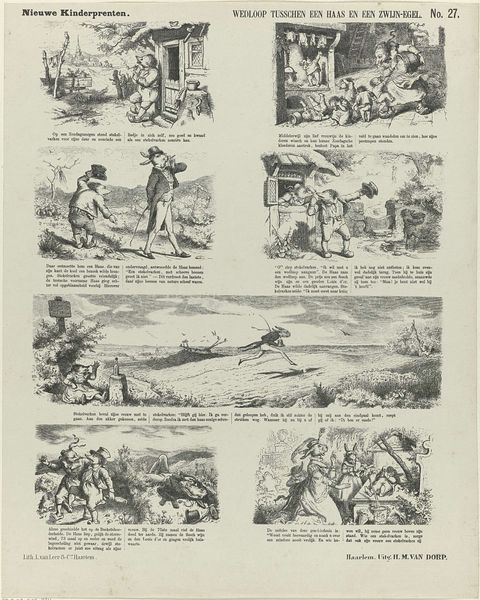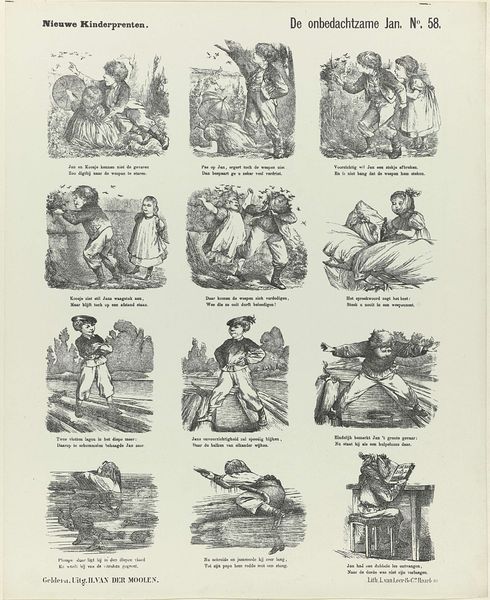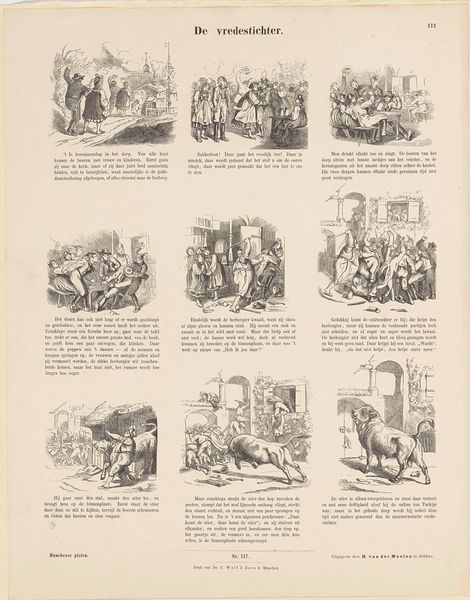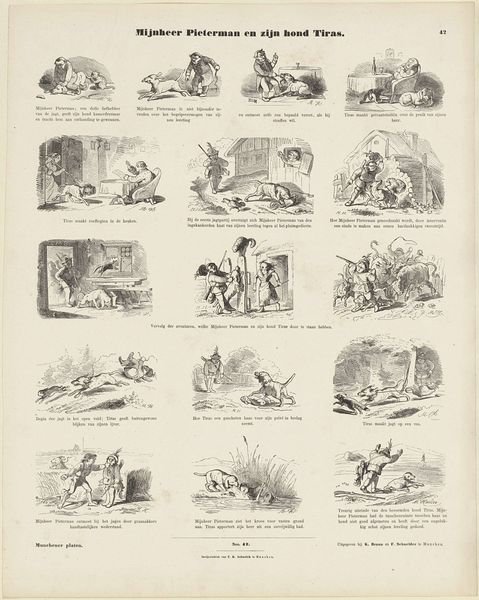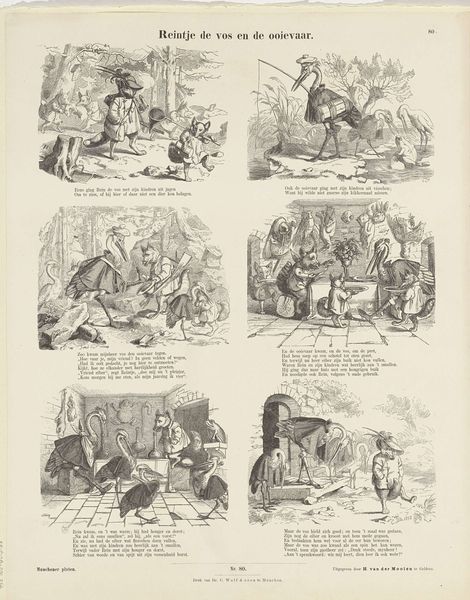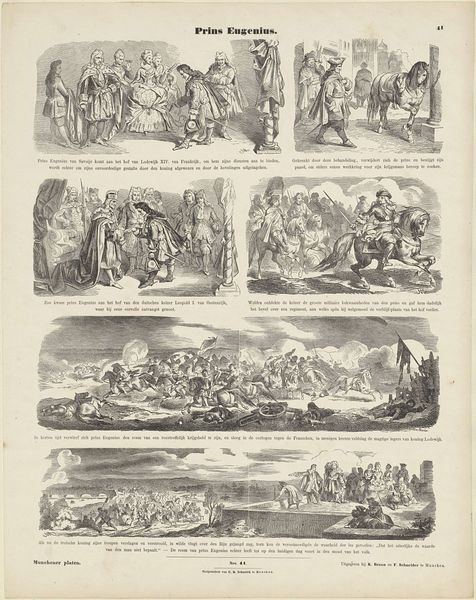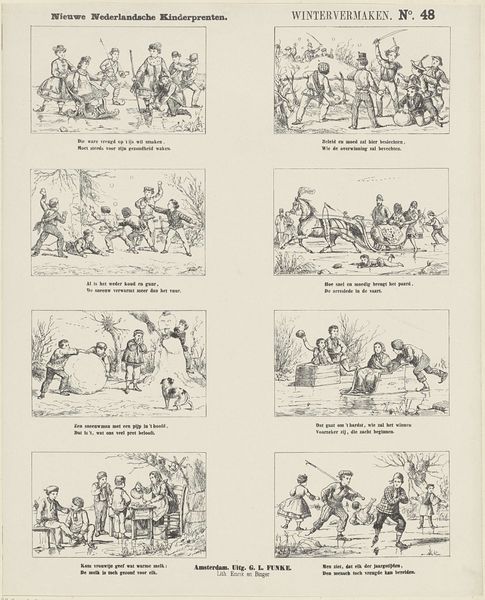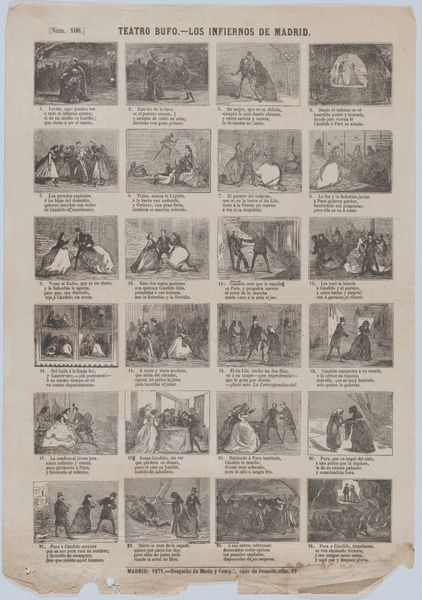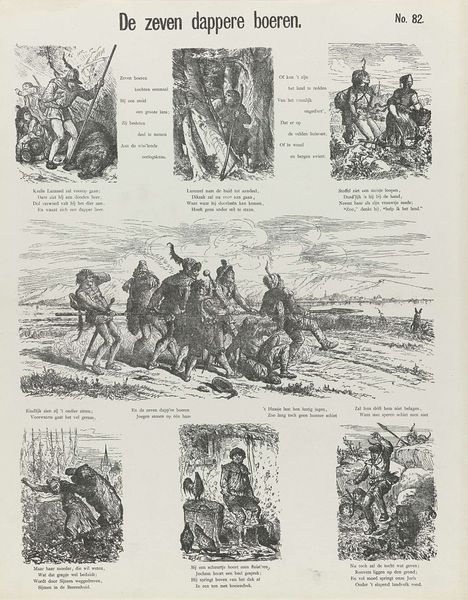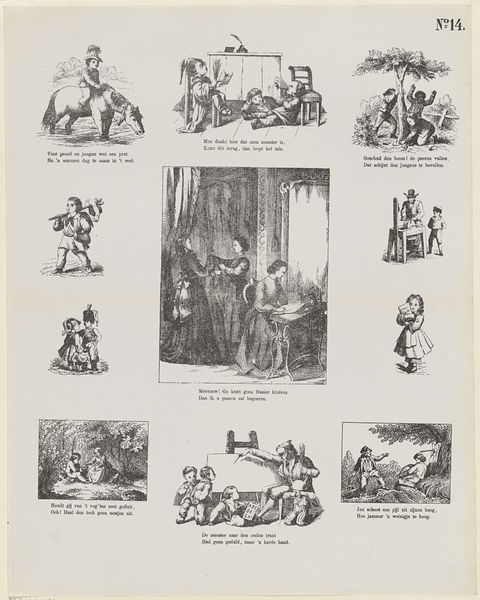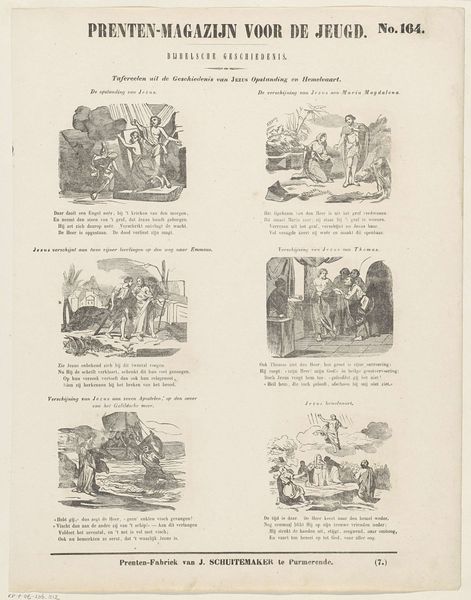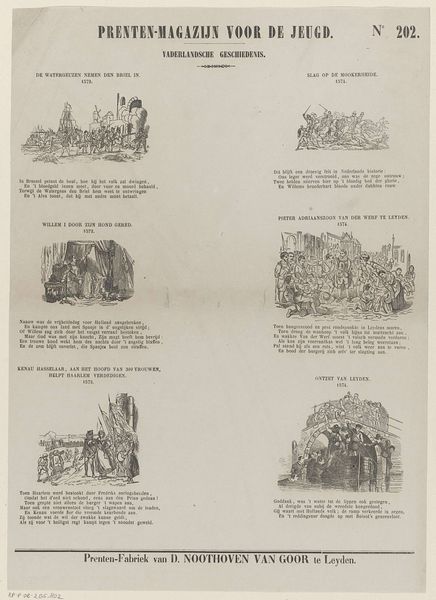
print, engraving
quirky sketch
old engraving style
personal sketchbook
idea generation sketch
sketchwork
pen-ink sketch
sketchbook drawing
storyboard and sketchbook work
sketchbook art
engraving
initial sketch
Dimensions: height 430 mm, width 344 mm
Copyright: Rijks Museum: Open Domain
Curator: We're looking at "Een droom," which translates to "A Dream," an 1881 engraving by De Ruyter & Meijer. Editor: It's immediately striking. The overall impression is fragmented, like stills from an animated film. Curator: Absolutely. De Ruyter & Meijer have crafted a series of narrative panels on a single sheet, emulating sketchbook art. It combines imagery suggestive of the indigenous Americas. Note the variety in rendering and textural play—observe the lines making up different sections. Editor: There is something about the mark making. These marks and lines are not just descriptive, they also are building mood. In some areas of the sheet there is frenetic mark making suggesting conflict. This technique also contributes to a raw, sketch-like energy which underscores this work’s place within visual culture as opposed to high culture Curator: Precisely! They were engaging with prevailing depictions of indigenous cultures. Note how labor is involved in mass production versus that involved in singular drawings. How do these different means influence or relate to the depiction and reception of art Editor: Thinking about the engraving process itself, and its historical context in relation to visual materials—you know, these distributed prints really fueled how society understood people and their conditions. I imagine a world of imagery constantly reinforcing some of those ingrained preconceptions about different groups. Curator: A print like this enters into a cycle of production and consumption shaping perceptions while relying upon its audience and producers Editor: It really prompts you to consider what a 'dream' signified, not just for the figures depicted, but what these publishers imagined audiences found so captivating. I now think differently about the relationship between maker and object with that social cycle you've described in mind.
Comments
No comments
Be the first to comment and join the conversation on the ultimate creative platform.

